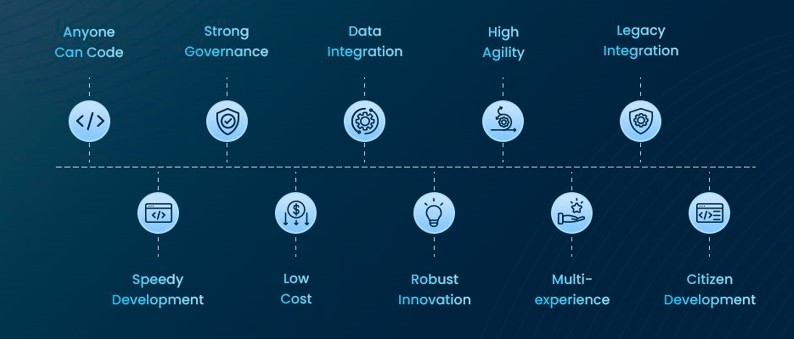In the digital age, sales teams are constantly seeking tools that streamline processes, enhance efficiency, and improve outcomes. Lead and activity management, pivotal to sales success, has witnessed a paradigm shift with the advent of no-code platforms primarily.
Bypassing traditional coding complexities, no code platforms offer a new frontier in sales automation, interactivity, and feedback-driven refinement. Hence, this article delves into how no-code solutions are reshaping the sales landscape. Through offering unparalleled advantages in lead and activity management.
Automating Lead & Activity Management
Many aspects of lead and activity management can surely get automated to increase efficiency, reduce manual errors, and ensure consistency too in the sales process. Here’s a breakdown of the automatable components:
Lead Management
- Generating and Tracking: Tools can provide lead generation automation by capturing leads from website forms, social media interactions, or email campaigns and feeding them into a CRM system.
- Lead Qualification: Algorithms can score leads based on predefined criteria, helping to prioritize which leads are most likely to convert. These tools can also assist in advanced customer segmentation, enabling sales teams to tailor their strategies for specific demographics, behaviors, or purchase histories.
- Distribution of Leads: Based on territories, product lines, or lead scores, automation can assign leads. Assignments to the appropriate sales representatives specifically.
- Lead Nurturing: Automated email campaigns or drip campaigns can engage leads at various stages of the sales funnel, delivering relevant content at the right times.
- Lead Conversion: Some systems can automatically update a lead’s status when certain conditions are certainly met, like when someone purchased your product.
- Analysis of Leads: Analytics tools can automatically generate reports on lead generation and conversion metrics.
Activity Management
- Task Tracking: CRMs can automatically create and assign tasks to sales reps based on certain triggers, like a new lead entering the system.
- Appointment Scheduling: Tools like Calendly can automate the scheduling process by allowing leads to pick available slots, which then sync with the sales rep’s calendar.
- Communication Logging: Integration between email platforms and CRMs can automatically log email interactions with leads.
- Document Management: Automated systems can store and categorize documents, and some can even auto-generate documents like proposals based on templates.
- Time Management: Tools can automatically track time spent on calls or tasks, providing insights into how sales reps allocate their time.
- Performance Metrics: Dashboards can automatically update with sales performance metrics in real-time, giving an instant view of KPIs.
- Collaboration: Platforms like Slack or Microsoft Teams can automate notifications and updates related to lead or account changes, ensuring all team members are in the loop.
Why No Code Is The Best Option For Automating Lead and Activity Management

When specifically focusing on lead and activity management tools, no-code platforms offer distinct advantages over traditional coding software:
Rapid Implementation & Scaling
Lead and activity management often require timely responses. No-code platforms allow businesses to quickly set up and modify their systems to adapt to changing sales strategies or market conditions.
Moreover, as sales teams grow and evolve, No-code platforms allow for easy adjustments and scaling, ensuring that the tool remains relevant and useful.
Customization for Sales Processes
No-code platforms offer drag-and-drop interfaces that can be also tailored to fit the unique sales processes of each business. This means that sales teams can structure their lead tracking, scoring, and follow-up activities in a way that aligns with their specific workflow without needing to adjust their methods to fit a rigid tool.
Beyond workflow adjustments, these platforms often offer template customization that allows businesses to align tools with their branding and specific operational needs.
Integration with Other Tools
Sales teams often use a suite of tools i.e., from email marketing platforms to CRM systems. No-code tools frequently come with built-in CRM integrations for popular software, ensuring that lead data can flow seamlessly across platforms.
Moreover, no-code platforms can seamlessly integrate with a plethora of third-party tools, from data visualization software to project management solutions, creating a unified sales ecosystem
User Adoption
Given their intuitive design, no-code tools are often easier for sales teams to adopt. So this is crucial for lead and activity management, where consistent tool usage across the team is vital for accurate tracking and forecasting.
No-code platforms prioritize user experience (UX), ensuring that both sales teams and their leads enjoy seamless interactions. A better UX can lead to increased engagement and higher conversion rates.
The intuitive nature of no-code tools also simplifies training and onboarding. New team members can quickly familiarize themselves with the platform, reducing the learning curve and accelerating their integration into the sales process.
Cost-Effectiveness
Building a custom lead and activity management tool from scratch can be costly and time-consuming. No-code platforms, with their pre-built modules and templates, can be more budget-friendly, especially for SMBs or startups at length.
Beyond the initial savings, businesses benefit from reduced costs in training, maintenance, and potential revenue increases due to heightened efficiency.
Real-time Collaboration
Many no-code platforms offer real-time collaboration features. This ensures that sales teams can coordinate on leads, share insights, and update lead statuses collaboratively, also reducing the chances of miscommunication or missed opportunities.
The collaborative capabilities extend to design as well. Multiple team members can co-design workflows or dashboards in real-time, ensuring a cohesive and efficient tool development process.
Security and Compliance
While developers can customize security for traditionally coded platforms, many no-code platforms prioritize security to protect lead data and sales activities.
In today’s digital age, data privacy is paramount. Therefore, many no-code platforms are custom designed with GDPR, CCPA, and other data protection regulations in mind, ensuring leads’ and customers’ data remains secure and compliant
Interactive Features
No-code platforms can offer real-time analytics through interactive dashboards. Since that provide sales teams with immediate insights. Without delving into complex coding, teams can design dashboards. As a result they can visualize lead sources, conversion rates, and sales performance metrics.
Interactive features, such as drill-down capabilities, allow sales representatives to delve deeper into data. In addition, they can understand patterns, and make informed decisions.
Additionally, many no-code platforms are completely optimized for mobile devices. That can cater sales reps on the move and ensuring they have access to crucial data and tools anytime, anywhere.
Feedback Loop
With no-code platforms, setting up automated feedback loops becomes a breeze. Imagine this to demonstrate!
After a successful lead conversion, the system automatically dispatches a survey to the client. Their feedback, whether it’s about the product, the sales process, or the interaction with the rep, flows back into the system.
This data will be under analysis to identify areas for improvement. Once feedback is correctly gathered, no-code platforms can assist in its analysis, deriving actionable insights. Further that can refine sales strategies and customer interactions.
No-code platforms also play a pivotal role in post-sale engagement. With automated follow-ups, retention campaigns, and upselling opportunities, businesses can nurture long-term relationships with their clients also.
Future of No-Code in Sales: Beyond Automation

As AI and machine learning technologies become more accessible, no-code platforms will likely integrate these capabilities, evolving into AI-driven sales tools. This means sales teams could benefit from predictive analytics. And, forecasting which leads are most likely to convert based on historical data. AI-driven automation could also refine lead scoring, ensuring that sales reps focus their efforts most effectively.
Additionally, chatbots might handle initial lead interactions, qualifying leads before they even reach a human representative.
Conclusion
No-code platforms represent a transformative shift in lead and activity management. They address modern sales challenges, positioning sales teams at the innovation forefront in a dynamic market. Therefore, through targeted guidance, business can enhance the catering of generated leads and activities through their complete journey and nurture them well!